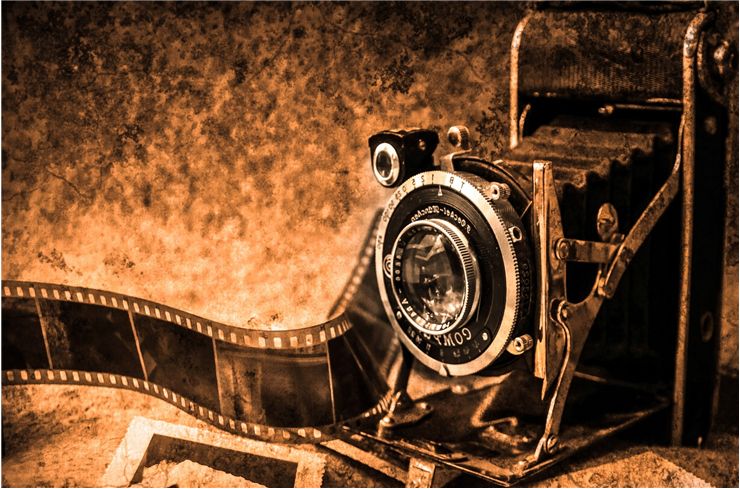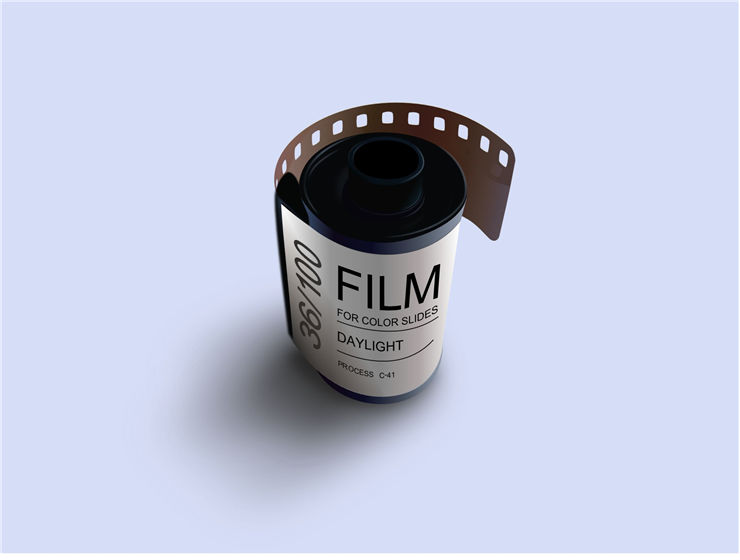History of Photographic Film - First Photographic Plates
Photographic film is a material used in photographic cameras to record images. It is made of transparent plastic in a shape of a strip or sheet, and it has one side covered with light-sensitive silver halide crystals made into a gelatinous emulsion. When a photographic film is exposed to light by a photographic camera, it chemically changes depending on the amount of light absorbed by each crystal. These changes create an invisible latent image in the emulsion, which is then fixed and developed into a visible photograph. Black and white photographic films have one layer of silver halide crystals, while the color film has three layers, each sensitive to a different color. Some color films have even more layers.
Early tries at photography didn’t use film but silver-plated copper sheets, paper, and even leather covered with light-sensitive chemicals. Around the middle of the 19th century, glass plates became standard because early transparent plastics could not achieve the opaqueness of glass and were still much more expensive than glass. The first film that was in a roll and flexible was made by George Eastman in 1885, but it wasn’t synthetic but on paper. The first roll film on transparent plastic (on nitrocellulose which is highly flammable) was invented in 1889. "Safety film" was introduced by Kodak in 1908. It was made of cellulose acetate and was invented as a replacement for dangerous nitrate film. Nitrate film was much tougher, slightly more transparent, and cheaper, and because of that, “safety film” didn’t completely replace it until 1951.
The first Photographic plates that could produce images in color appeared in 1855, but they required complex equipment, long exposure times, and were not too practical. Color films appeared in the 1930s, but these early films produced too dark images. In 1936 Kodak started selling Kodachrome, which was much more similar to modern color film because it used the subtractive color method. This color film was used for home movies and photographic cameras but was still too dark and much more expensive than black and white. It took 40 years for color film to become standard and for black and white to be used for low-light and art photography.
There are different types of films today:
Print films are standard, commonly used films. They produce transparent negatives (images with inverted colors) printed on photographic paper using an enlarger or contact printing. These films can be color or black-and-white.
Color reversal film (or "slide film.") works the same as a print film, but it doesn’t invert colors. It makes diapositives (transparencies) that can be placed in small metal, plastic, or cardboard frames and used as slides in projectors or slide-viewers. There are also color reversal sheet films of large format. Professional photographers use them to produce high-resolution images that can be scanned digitally later.
Black-and-white reversal film exists but is used rarely. Positive black-and-white slides can be produced from negative ones without many problems, and this method is more commonly used.
Instant films are exposed and developed by an instant camera after a photograph has been taken, without the need to be developed in the laboratory.
Some films are made to be sensitive to non-visible radiations: ultraviolet and infrared.
Those films made to be sensitive to X-ray radiation are used for medical imaging. They can, for instance, see broken bones or foreign objects in the body without invasive surgery.
Photographs used different types of films according to their characteristics. “Film speed” describes a film's sensitivity to light. “Slow” films have lower sensitivity and must be exposed to light much longer to achieve the same image as some “faster” films.

